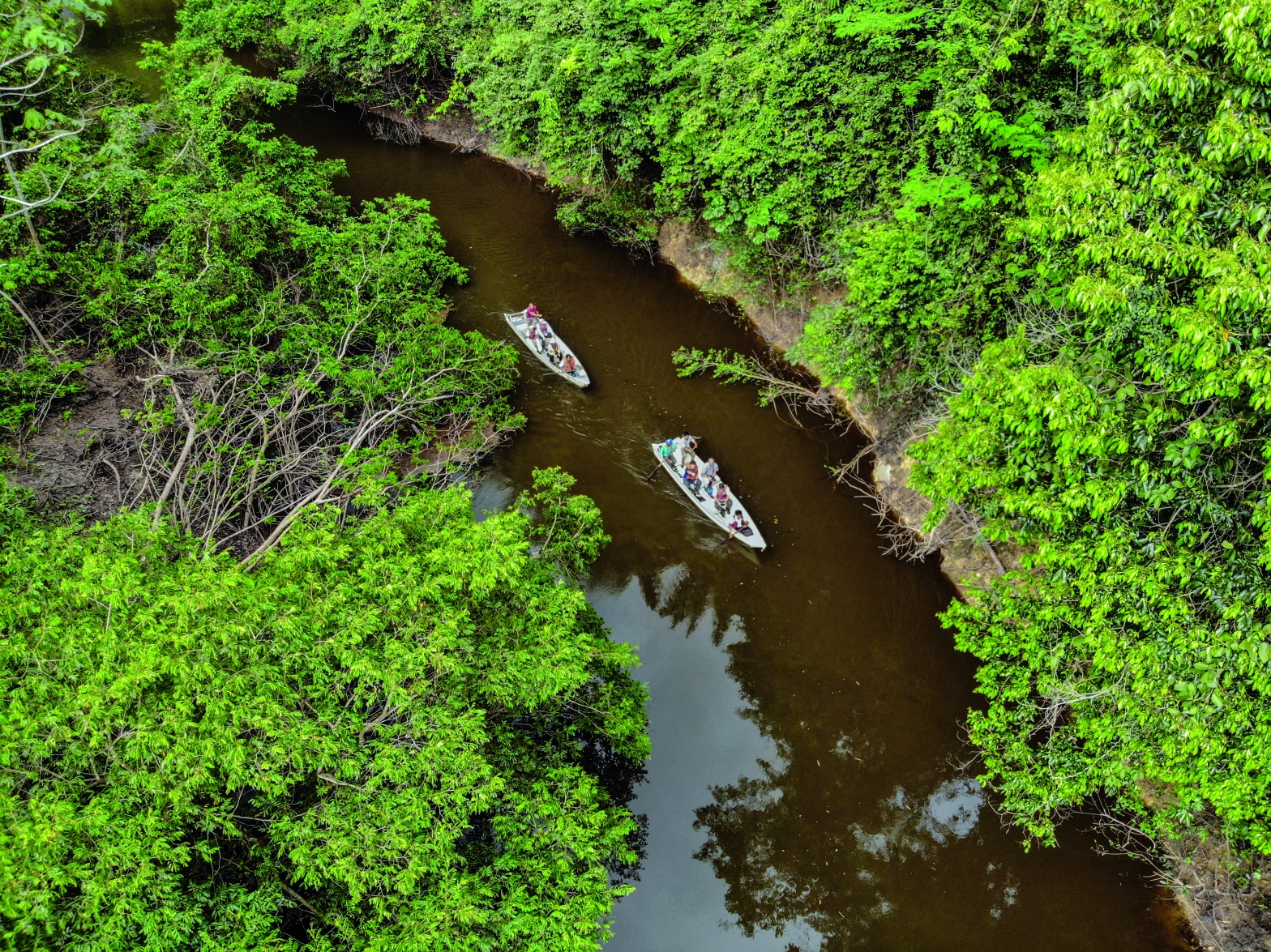Wildfires in humid tropical forests are one of the most critical environment problems of this century, that could define the future of the tropical forest biome and the world’s climate. In Amazonia, the largest tropical forest in the world, forests are being burned at an unprecedented rate. During the 2015/2016 El Nino, an extreme droughtContinue reading “The invisible effects of wildfires in Amazonian forests”
Category Archives: Amazonia
Nature-based Climate Solutions must be guided by a Rights-based Approach
Within the last 50 years, the human population has doubled, with global economic demands for energy and materials increasing 4-folds. In tandem to this growth has been an increase in global temperature of 0.2 degree C per decade since 1970, and according to the IPBES 2019 Global Assessment Report, an acceleration of species extinction rateContinue reading “Nature-based Climate Solutions must be guided by a Rights-based Approach”
Droughts have a significant & long-lasting change on tree and liana regeneration in a monodominant Amazon forest
Monodominant tropical forests, especially those not associated with flooded environments, are rare and still poorly understood. In the transition between Cerrado and the Amazon rainforest biomes in Brazil, lies patches of monodominant forests of “Pau-Brasil” or Bloodwood cacique (Brosimum rubescens, Figure 1). The structure of these forests have trees of different sizes and represents aboutContinue reading “Droughts have a significant & long-lasting change on tree and liana regeneration in a monodominant Amazon forest”
Gold mining leaves deforested Amazon land barren for years
Travel through the rainforest in Guyana, in northern South America, and you’ll often hear the indigenous adage: “a forest has no end and no beginning” to explain their natural cycle of disturbance and recovery. For the people who live in these forests, their experiences are based on decades of slash and burn cultivation, from whichContinue reading “Gold mining leaves deforested Amazon land barren for years”
Rethinking trees in a multi-cultural urban area
This article was researched and written in early 2019. A shorter version was published in September 2019 in Mongabay, who originally commissioned the piece. “Cherry, mango, star apple, pam, cashew, pomegranate,” Carol Dabie, 37, rattles off a list of trees that once filled her family’s yard. She recalls climbing them as a child, impatiently waitingContinue reading “Rethinking trees in a multi-cultural urban area”
Monitoring the loss of trees in the Amazon forests: How satellites, lasers, cloud computing, and artificial intelligence are helping in the fight against deforestation and degradation
Within the last few decades, forest loss in the Amazon forests has been monitored using satellites such as Landsat (30m resolution) and MODIS Terra and Aqua (250-1000m resolution). Detecting deforestation is relatively easy due to the abrupt changes in the landscape, from vegetation/forest to exposed soil or pasture. This shift causes large changes in theContinue reading “Monitoring the loss of trees in the Amazon forests: How satellites, lasers, cloud computing, and artificial intelligence are helping in the fight against deforestation and degradation”
In Guyana, Sustainability is the Journey and the Destination
A Long-standing Commitment to Responsible Travel South America’s best kept secret is not much of a secret anymore. From its Low Carbon Development Strategy to the more recent Green State Development Strategy (GSDS), Guyana has had a long-standing commitment to a sustainability agenda. This coupled with nine Indigenous Nations who have been stewards of theirContinue reading “In Guyana, Sustainability is the Journey and the Destination”
The Exchange of Fruits: How past Indigenous Communities shaped the forest in Brazil
During an archaeological survey in Roraima State, Brazil, in July 2019, I was mistaken as a Macuxi, an indigenous person, by a landowner, whom quickly expelled me from his property. In my country, landowners often assume indigenous persons enter their property to reclaim the land. It wasn’t until the archaeological coordinator explained I wasn’t anContinue reading “The Exchange of Fruits: How past Indigenous Communities shaped the forest in Brazil”
Hunting, Logging & Living: the impacts of logging and indigenous hunting on large mammals
Wildlife conservation and management programmes are dependent on crucial information on animal populations, including their numbers, movements, habitat use, and how they respond to land-use and land cover changes. Such information is essential if conservation objectives related to species protection, sustainable management, and reduction of human-wildlife conflicts are to be achieved. However, quantifying the impactsContinue reading “Hunting, Logging & Living: the impacts of logging and indigenous hunting on large mammals”
Economic Development and Conservation: Are they compatible?
In August 2019, Brazil’s President Jair Bolsonaro dismissed the protection of Amazon rainforest as an impediment to economic development in the wake of the fires raging across his country. He reiterated this point at the recently held 74th Session of the UN General Assembly, citing that “there is no political freedom without economic freedom”.









